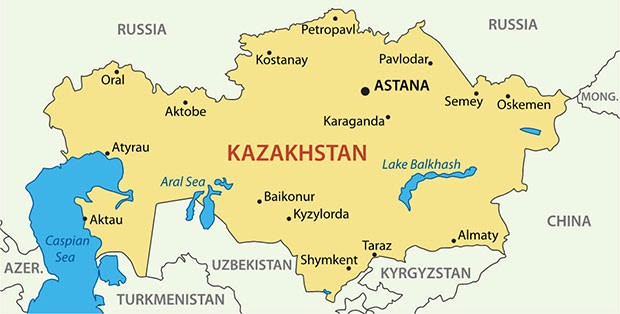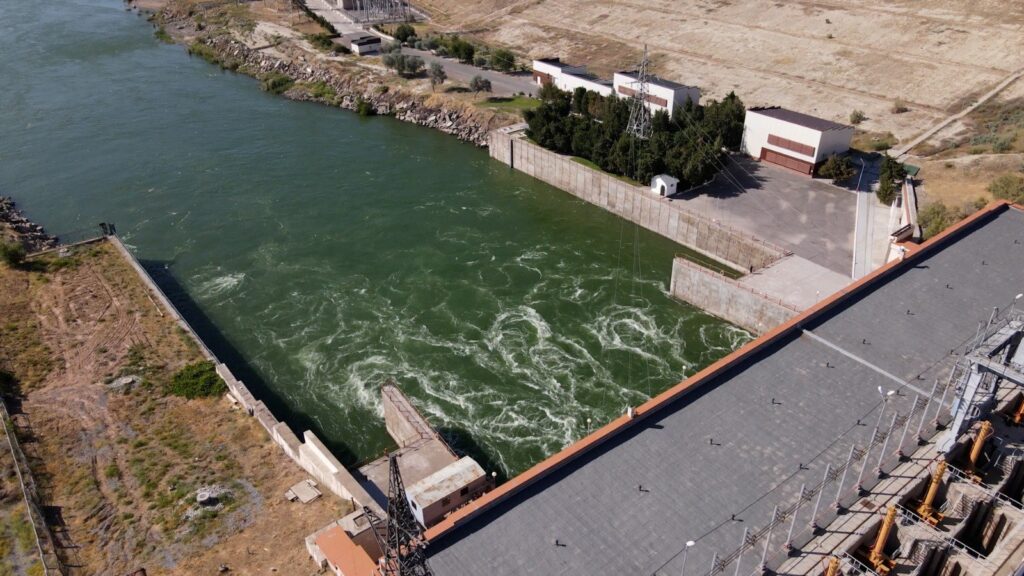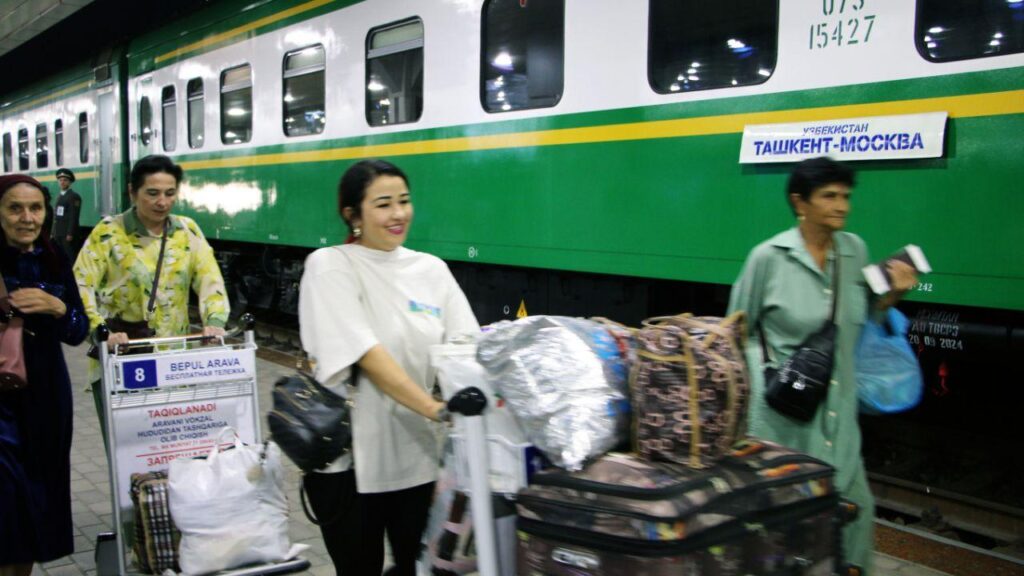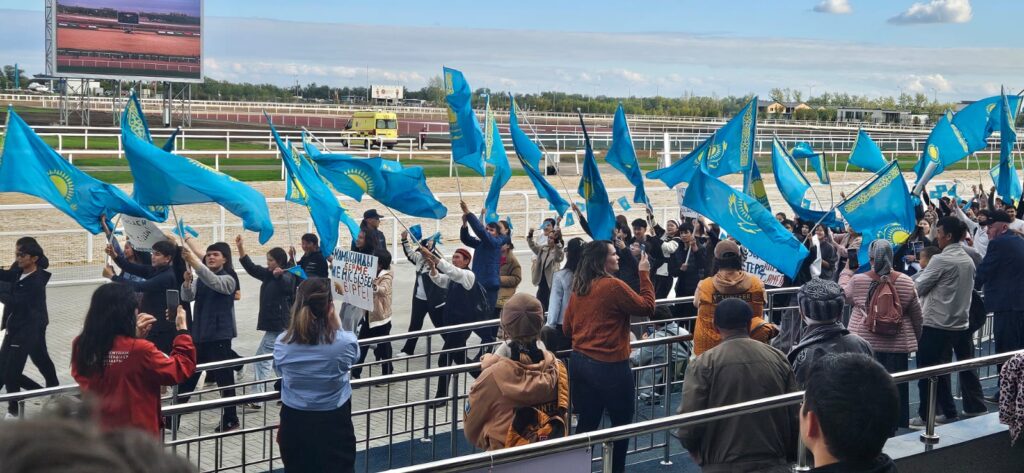ASTANA (TCA) — The rapid growth and development of Kazakhstan’s capital Astana has been achieved largely at the expense of other regions of Kazakhstan and due to internal migration. We are republishing this article on the issue, written by Rafis Abazov*, originally published by the CACI Analyst:
On the eve of the 20th anniversary of moving Kazakhstan’s capital from Almaty to Astana, the country’s government announced that the city of Astana has welcomed its one-millionth resident. Indeed, this was a remarkable achievement for the city, which within just 20 years – between 1997 and 2018 – grew from a population of only 290,000 to more than 1.1 million inhabitants, or more than 300 percent. Kazakhstan’s President Nursultan Nazarbayev envisions that the population of Astana could exceed three million by 2050. Therefore, the main question is whether Kazakhstan can sustain this rapid urbanization shift without facing major social and demographic upheaval.
BACKGROUND: After World War II, the population of Astana (Tselinograd City between 1961 and 1992) – like many other cities in Kazakhstan – expanded due to two major factors. One was natural population growth, as the birth rate among Kazakhs was among the highest in the former Soviet Union in the 1950s and 1960s. The other was labor immigration – both highly skilled and unskilled – into Kazakhstan in general and into the city of Astana (then Tselinograd) in particular, as probably more than 50 percent of its inhabitants during the same period were born outside Kazakhstan.
Since 1991, the pattern of urban growth has changed significantly, reflecting the dramatic economic changes since Kazakhstan’s independence. On the one hand, the population inflow declined dramatically, as the government of independent Kazakhstan established quite tough regulations on labor migration. Unlike the oil-rich countries in the Middle East, Astana did not open its doors to the large migration inflow of temporary workers even during the oil-bonanza days, and restricted immigration by introducing various direct and indirect forms of regulation and control. For a short period, Kazakhstan attracted a relatively large influx of unskilled workers from the southern neighbor states – Kyrgyzstan, Tajikistan and Uzbekistan. The World Bank and some other international agencies have estimated that the number of temporary workers from those three countries between 2002 and 2012 reached between 300,000 and 600,000 young people, who moved to Kazakhstan from their home countries looking for seasonal jobs. However, these numbers declined significantly after the oil price collapse in 2008. Reports have circulated about a potentially large inflow of workers from neighboring China. However, due to the strong negative public outcry, the government instituted new restrictions and the fears of a million Chinese migrants in Kazakhstan have never materialized.
On the other hand, the birth rate in Kazakhstan also experienced a steep decline in the 1990s, although recovering to some extent during the last decade. In fact, the decline was so deep throughout the 1990s that Kazakh demographers call this the “demographic hole,” with the birth rate in some areas dropping from 26.2 children per 1,000 inhabitants in 1987 to 14.8 per 1,000 in 1998. The cumulative result is that the total population of the country has remained almost unchanged during the last 25 years, growing by as little as 10 percent, even while the populations of Tajikistan and Uzbekistan grew by more than 50 percent.
IMPLICATIONS: During the recent three decades, the population of Astana – as well as that of the two major urban centers Almaty and Shymkent – showed an unprecedented growth. Astana grew from 281,000 in 1989 (census) to 1.1 million in 2018 (government est.), or more than 300 percent; Almaty grew from 1.1 million in 1989 (census) to 1.8 million in 2018 (est.) – 70 percent; and Shymkent from 392,000 to almost one million – 250 percent. The statistical data probably does not fully reflect the actual population of Astana, which expands with the constant inflow of seasonal and temporary workers. For example, Astana’s Mayor Asset Isekeshev recently stated in an interview that between 2014 and 2017 the real population of the capital was significantly underestimated due to outdated procedures of population registration. Some experts suggest that the miscalculation of the capital’s population amounted to about 100,000–150,000 during the past five years.
Astana’s expansion in the last two decades has been different from its experience during the second half of the 20th century and probably less sustainable, as it achieved most of its growth by attracting internal migrants from all over Kazakhstan, and less by natural population growth and international migration. This presents a number of challenges to the government of Kazakhstan, extending beyond the regional and even national levels. There are three major areas of impact.
First, the social and economic policies of Kazakhstan’s government have helped to stimulate Astana’s rapid growth. The oil revenues have been directed to fund modern infrastructure, including contemporary buildings for business centers, roads, bridges, airports, expo centers and large housing projects, including affordable housing. However, Astana has struggled to attract new businesses on a large scale, and especially job-creating small and medium enterprises (SMEs).
Second, the rapid economic changes and urbanization have so far not generated significant changes in the development of the labor market. A large number of jobs have emerged in the government and state-controlled enterprises as well as cyclical construction and service sectors. Yet, the city needs to stimulate a significant number of internationally competitive businesses that would create a major number of jobs in an innovation-driven economy, especially in Information and Communication Technologies (ICTs), programming, global transportation and logistics, etc.
Third, Astana has achieved social and economic stability, and stability in its labor market, at a cost. As the population of Kazakhstan grew very slowly during the last two decades, the skyrocketing growth of Astana came at the expense of small industrial cities and towns, which are in decline due to a lack of investments and human capital, along with the ageing of the population. In fact, the small cities and towns – where more than 50 percent of the population lived before the 1990s – struggle to create new sustainable business opportunities due, among other factors, to the lack of large-scale investments as the capital Astana absorbs a significant portion of the resources. According to Forbes Kazakhstan, Astana alone received about 7.4 trillion Tenge (Kazakh currency) which is equivalent to about US$ 49.2 billion.
CONCLUSION: Astana has achieved impressive growth due to new investments in the city’s industrial and service sectors. The city has been a special project of President Nazarbayev, who ordered the shift of the country’s capital from Almaty to Astana in the mid-1990s, and channeled significant resources into the city. Consequently, Astana’s economic growth has helped create hundreds of thousands of new jobs, attracting migrants from both rural areas and other urban centers. However, in order to realize Nazarbayev’s ambitious dream, Astana needs to achieve sustainable and consistent growth of its economic base. This would mean not only stimulating new construction and attracting more people to the capital, but also creating an internationally competitive and attractive business environment for real businesses – both national and international – to move in. Astana also needs to attract more young talents and more innovators; to this end, Kazakhstan probably needs to relax some of its migration restrictions and open its doors to selective and targeted immigration of highly skilled professionals, especially from the neighboring countries, in order to support the growth of new businesses and create new jobs. Astana should also direct significant resources towards capacity building and better education to expand its own highly qualified labor, which will help the country address the challenges of the 21th century.
* Rafis Abazov, PhD, is a visiting professor at Al Farabi Kazakh National University and a director of MDP/Global Classroom Program on sustainability








